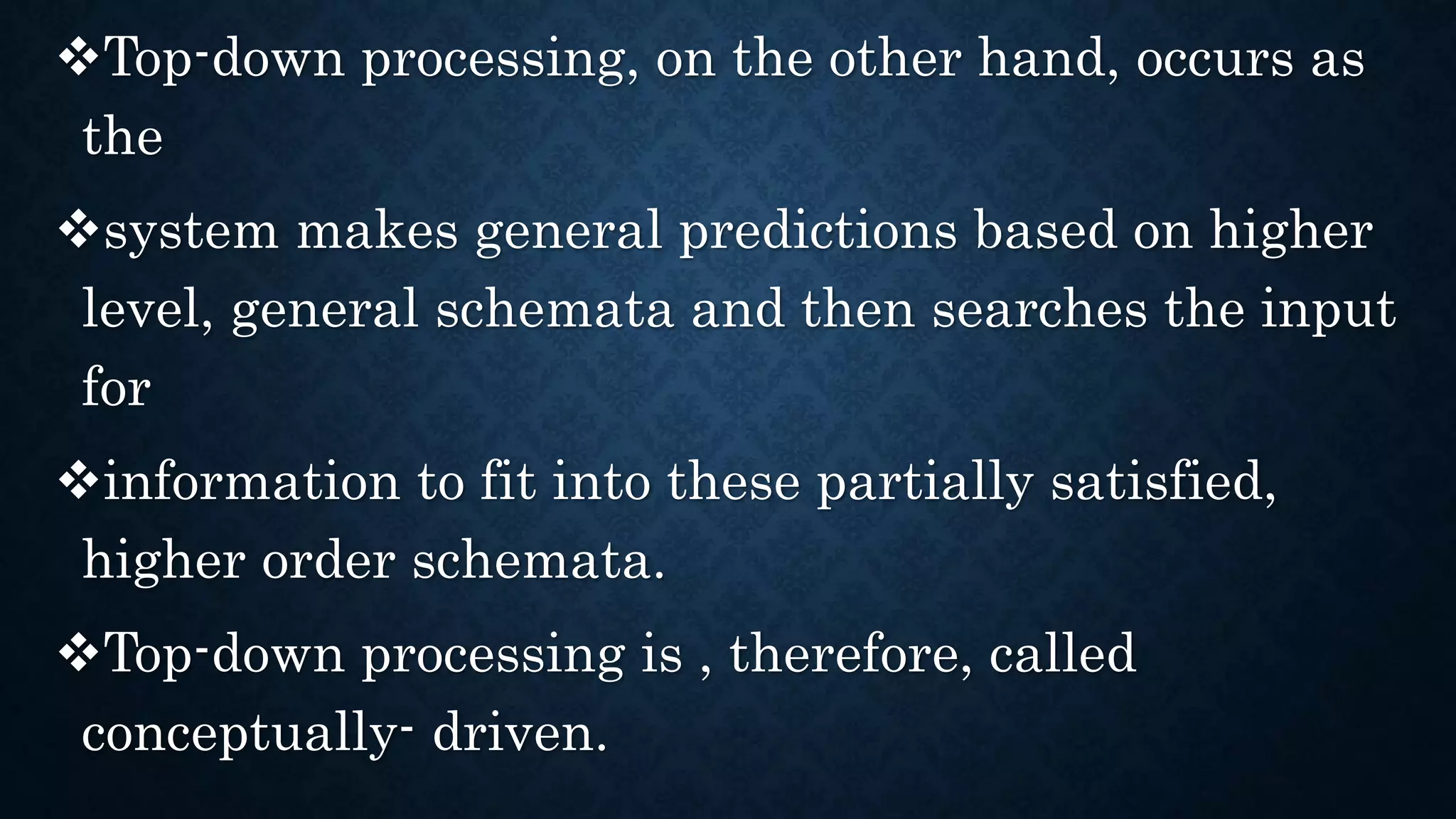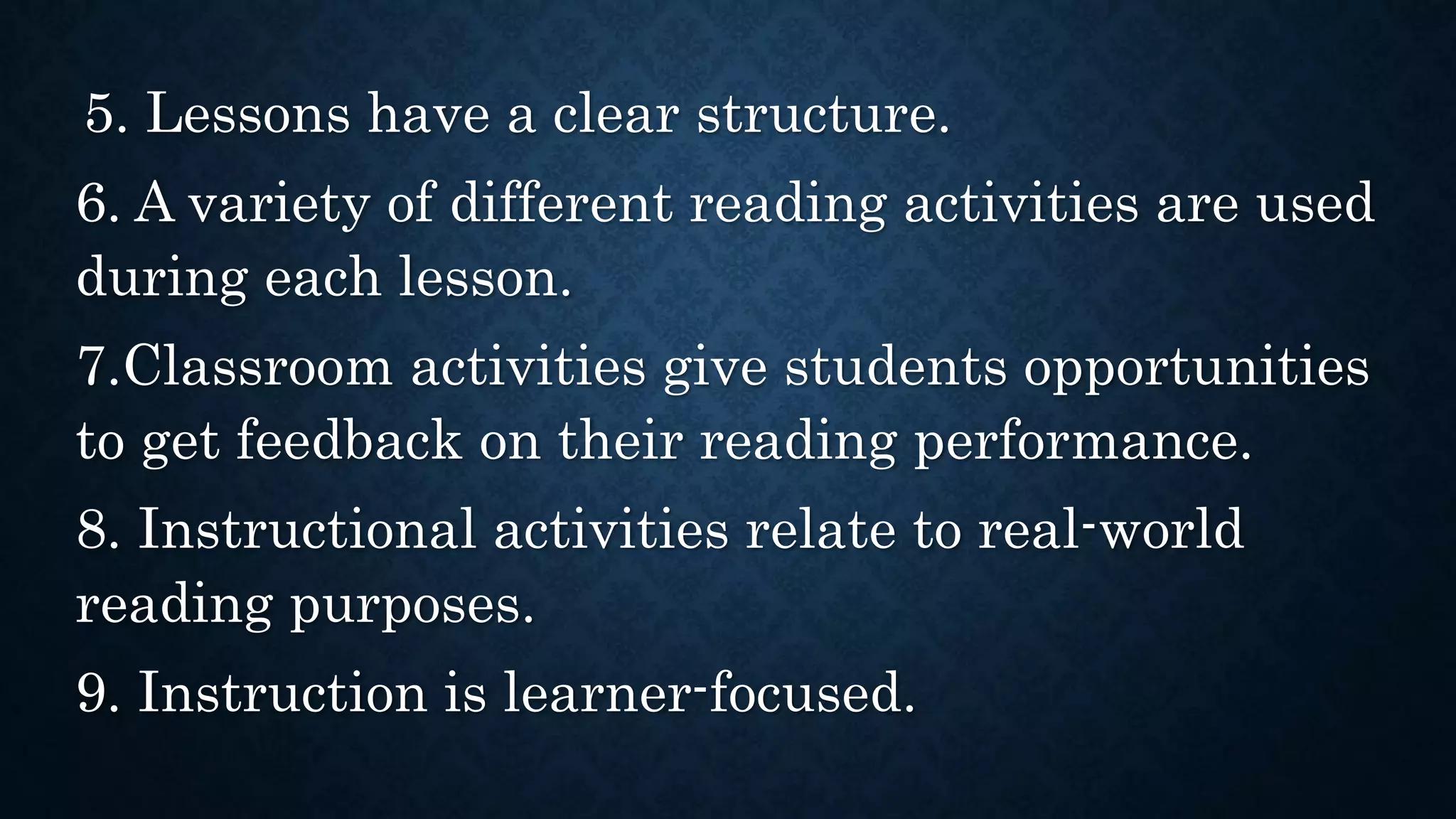This document discusses various aspects of reading, including:
1. It outlines different purposes for reading such as for information, instructions, enjoyment, or keeping up with current events.
2. It describes different reading strategies and approaches, including bottom-up processing of decoding text and top-down processing of making predictions.
3. It discusses factors that can influence reading comprehension, such as an individual's background knowledge and cultural familiarity with the topic.























